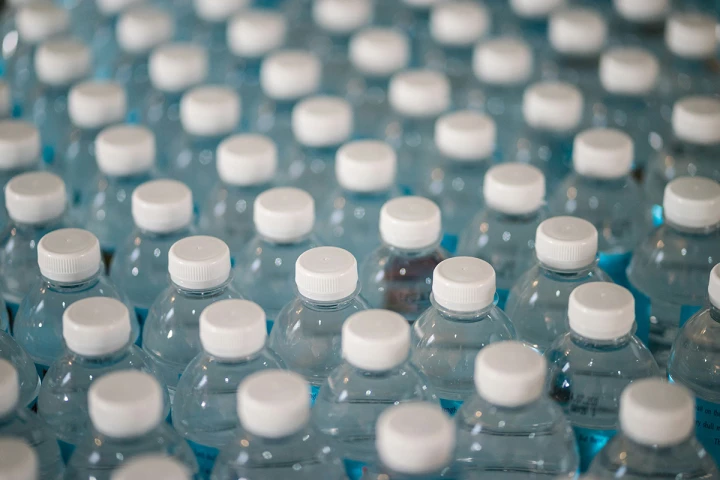Environment
News and analysis of environmental issues and green technology, which are more important today than ever.
Top News
-
A preserved tree fossil gives an unprecedented view into a moment 42,000 years ago when the Earth’s magnetic field went haywire, triggering environmental chaos, influencing everything from an increase in cave paintings to the Neanderthal extinction.
-
A new video takes you inside Dyson's impressive vertical farming operation, which is home to 1,225,000 strawberry plants and shows you how the company is applying its manufacturing knowledge to producing homegrown food for British consumers.
-
Using scented products indoors changes the chemistry of the air, producing as much air pollution as car exhaust does outside, according to a new study. Researchers say that breathing in these nanosized particles could have serious health implications.
Load More
Latest News
-
December 18, 2025 | Ben CoxworthThe tons of discarded mussel shells generated by the seafood industry may be organic, but they're still very slow to biodegrade in landfills. They may soon find new life, however, sandblasting jeans in the textile industry.
-
December 14, 2025 | Chelsea HaneyA nuclear production facility in Washington state, called the Hanford site, once forged the plutonium that reshaped the world. Now it’s forging glass; a quiet act of undoing at one of Earth’s most contaminated sites.
-
December 05, 2025 | Ben CoxworthThe water leaving your washing machine may soon be a lot more eco-friendly, thanks to the anchovy. A filter inspired by the tiny fish could remove microplastics from the outgoing water, keeping them from entering local waterways.
-
December 03, 2025 | Shirl LeighPaying respect to the dead can be an eco-unfriendly matter, whether opting for a wooden coffin or cremation. Instead, Loop Biotech has found a way to save forests and reduce CO2 emissions with the Loop Living Cocoon, a mushroom-based casket.
-
December 02, 2025 | Malcolm AzaniaInstead of growing, harvesting, processing, and shipping fabric across the world, why not let non-polluting bacteria grow it and dye it in a single container? Korean scientists are taking the first steps towards doing that very thing.
-
November 26, 2025 | Ben CoxworthWhat we think of as polyester fabric is most often actually a blend of polyester and cotton, which has proven very difficult to recycle. A new solvent, however, breaks the blend down into its two components, leaving both almost completely reusable.
-
November 20, 2025 | Bridget BorgobelloA new project called TreeSoil is reimagining how architecture can support vulnerable environments. It proposes a small but radical idea: build structures not for people, but to protect saplings struggling to survive in degraded landscapes.
-
November 14, 2025 | Abhimanyu GhoshalA climate report projects that the world's carbon emissions are on track to hit an all-time high this year, despite major advances in green tech and adoption of measures to curb pollution from the use of fossil fuels.
-
November 07, 2025 | Pranjal MalewarNitrogen fixation is a process where certain microbes convert nitrogen gas into ammonium, a form phytoplankton can use. This wasn't thought to happen in the Arctic, but new evidence suggests it might, offering a fresh supply of nitrogen to fuel life.
-
November 04, 2025 | Malcolm AzaniaHoly sun-repellant spray, Batman! Could injecting sunlight-dimming aerosols into the atmosphere save the planet from industrial climate destruction? A new Columbia Climate School report definitely suggests that caution is warranted.
-
November 01, 2025 | Abhimanyu GhoshalA new study has looked into whether electric cars are really better for the environment than gas-powered cars. It turns out that this is indeed the case: after two years of use, EVs start reducing their total carbon footprint compared to gas cars.
-
October 25, 2025 | Chelsea HaneyAs private companies make spaceflight routine, Earth’s upper atmosphere has become a testing ground with each launch leaving residues that react with ozone, thinning the layer that shields life below. It’s a problem scientists are just beginning to quantify.
-
October 20, 2025 | Ben CoxworthHarsh, eco-unfriendly synthetic herbicides are definitely one of those things that you shouldn't be using if you don't have to. Japanese researchers are thus now developing a green alternative, derived from the leaves of a humble walnut tree.
-
October 06, 2025 | Abhimanyu GhoshalScientists in China have devised a way to capture carbon dioxide stored in seawater, and convert it into biodegradable plastic precursors. This approach could reduce the acidification effect of CO2 emissions in marine ecosystems, with an added bonus.
-
October 02, 2025 | Bronwyn ThompsonNearly 3,000 growing chasms have opened up in dozens of towns, swallowing up roads and houses in their path. Known as urban gullies, these destructive forces of nature are increasing rapidly and now threaten to displace more than 3.2 million people.
Load More

















